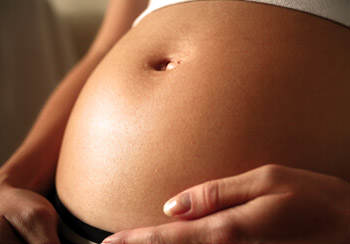While the most common skin conditions a surrogate mother might encounter during pregnancy are pregnancy glow, stretch marks, acne and chloasma, there are other ones that a surrogate should be aware of. Most aren’t permanent – they usually go away after childbirth.
Some of them are:
1. Red palms and soles. As early as the second month of pregnancy, the insides of your hands, and the bottoms of your feet may itch and take on a reddish hue, called palmar erythema. This increased color is no more than a curiosity of pregnancy, which usually ends with childbirth.
2. Spider veins. Those much-discussed pregnancy hormones, along with increased blood volume, cause the tiny, squiggly red or purple capillaries just below the surface of the skin to branch out and become more visible during pregnancy. It’s also common for spider veins to pop out on the face or on the sclera or white part of the eyeballs during delivery; intense, red-in-the-face pushing can break tiny blood vessels. Known as nevi, these burst vessels can be camouflaged by the appropriate use of make-up. Nevi takes longer to disappear than many of the other skin problems of pregnancy; some spider veins on the legs or torso may not go away on their own. A dermatologist can remove these spider veins using injections if you feel that’s necessary.
3. Itching. Many women enjoy a good “scratch down” at the end of the day. Some areas of your skin may itch because they are dry and flaky; others can itch due to a prickly rash. Many women find the itching to be most bothersome in the skin that stretches – mainly over the abdomen, but also on hips and thighs. To help you avoid itching, try applying baby powder to the troubled areas.
4. Skin tags. Some pregnant women develop tiny polyps, called skin tags, in areas where skin rubs against clothing or other skin. Commonly found under the arms, between neck folds, or under bra lines on the chest, skin tags are caused by hyperactive growth of a superficial layer of skin. They disappear a few months following delivery, but can be easily excised if they bother you.
5. Heat rash. You may think that only babies get prickly heat rash, but pregnant women also can. Caused by the combination of an already overheated pregnant body, dampness from excessive perspiration and the friction of skin rubbing against itself or against clothing, prickly heat rash is pimply and slightly irritating. It’s most common in the crease between and beneath the breasts, in the crease where the bulge of the lower abdomen rubs against the top of the pubic area, and on the inner thighs. To help prevent heat rash, try keeping yourself cool by taking regular baths or showers.
Most of these skin conditions usually vanish after childbirth. Although they’re quite normal, they can easily be aggravated at times. The best way to prevent them is to keep yourself fresh, cool and clean at all times.
[message/]




